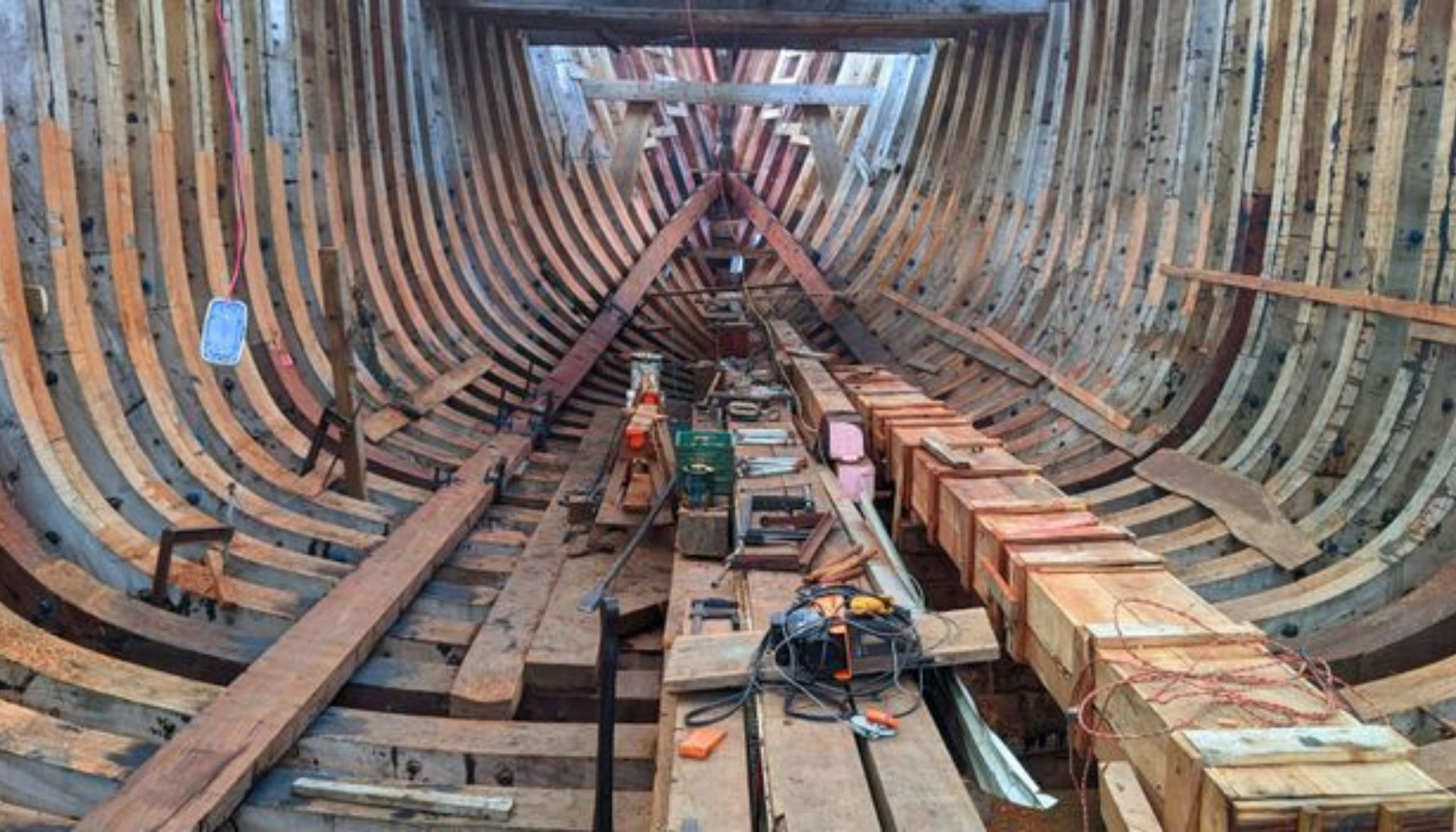A Zero-Emission Wooden Sailing Ship is being built to transport Coffee around the World
Built mainly of tropical hardwood and created using traditional shipbuilding techniques, with the assistance of modern power tools, it’s inspired by historical Scandinavian cargo ships. It’s designed to prove the value of clean zero-emission shipping, according to it’s creators.

Why a wooden sailing ship, isn’t this going backwards?
This old-fashioned schooner is the masterpiece of Sail Cargo Inc and is “estimated to cost $.2 million”, which is apparently significantly less than what it would cost to build a modern shipping vessel, according to Jeremy Starn, media manager at Sail Cargo Inc.

The brains behind the idea said they knew the value and environmental impact of clean, zero-emission shipping.
Alejandro Alvarado Lawson, Exterior Commerce Promotion Agency for Sail Cargo says: “Ceiba, in terms of export, gives us an option for all those companies that have a very identified niche, which is not volume, but quality; a niche that is very committed to environmental responsibility.”
Perfect for coffee.
How will they make it?
It’s not a little rowing boat, in case anyone was wondering. It’s a 45-metre-long topsail cargo dinghy with three masts, and 14 sails. It’ll be big enough to hold 12 crew, with extra room for trainees or guests. Leave a space for me please!
It’s constructed of tropical hardwood, using traditional building techniques, but with the help of modern power tools. They’re not making it harder for themselves than they need to! It also has modern features to make sure it’s safe, fast and has a good cargo capacity.
It will have an electric motor tucked away for emergencies, making it completely emission-free.
It is made primarily of tropical hardwood using traditional building techniques aided by modern power tools. The architectural design is inspired by cargo ships from Scandinavia around the turn of the century. However, it incorporates modern elements to ensure safety, speed, and cargo capacity.

Jeremy Starn of Sail Cargo said “There are not many examples to compare it to. Ceiba [the boat] is an unprecedented cargo ship. Because no wooden vessel of this scale has been constructed in the 21st century and never in the history of Costa Rica.”
Where is it being built?
It’s being built in Costa Rica which they say is a world leader in combating climate change and continually pushing the bar in renewable energy initiatives.

Quoting Starn: “These policies, along with Costa Rica’s commitment to the innovative green business made the choice simple. One example is that Costa Rica’s electricity is generated from 98 percent renewable resources and aims to be emission-free by 2050.”
When will it be ready?
It’s been a while in the making. They founded the company in 2016 and the shipyard was built in 2018. They keel has been laid in 2019 and the framing was completed at the end of 2020.
Here’s what the finished article is due to look like:

You can see the progress on the company’s “milestones” page here.
Where will it be used?
To quote a statement on their website:
“The Pacific Exchange Line is the first shipping route developed by SAILCARGO INC. Voyages will take ships of this line northbound to Canada via Hawai’i, down past California and home again to Costa Rica. Extensions to this service line may include Peru, the Galápagos, and Alaska. When our ship, Ceiba, is operational in 2022, she is expected to sail this route twice annually.”

“SAILCARGO INC. is planning routes across the globe to serve growing markets. New routes are being designed by our Trade & Logistics Divisions in accordance with interested clients. If you wish to sail your goods, or learn more about carbon free shipping, voice your interest today.”
It looks amazing. Have a look at the pictures:









All information and pictures from, and credits to Sail Cargo Inc




